[TamilNet, Tuesday, 16 September 2014, 13:38 GMT]Thanks to the sustained efforts of the Indian Consulate in Jaffna
‘interest in Hindi’ is sprouting among Jaffna Tamils, reports New Indian
Express on Tuesday, citing ‘Hindi Diwas’ [Hindi Day] celebrated by the
Consulate, 20 students completing a course and one of them telling that
“There are now people who think it will be useful to know Hindi if they
go to north India for studies or pilgrimage.” Eezham Tamils wish that
the Chinese embassy would soon start teaching Mandarin Chinese and the
other embassies would follow suit in teaching major European, Latin
American, Arabic and other Asian languages, so that the nation of Eezham
Tamils could have a wider interaction with the world and with their own
kith and kin worldwide, commented Tamil activists for alternative
politics in the island.
“A passion for Hindi film music and the Hindi language is commonplace in
Sri Lanka. But Jaffna, the stronghold of Tamil nationalism, has been an
exception to this rule. The Tamil-speaking North is one place in the
island nation, where Hindi films are not shown, Hindi soaps are not
watched, and Hindi songs are not aired. But these may well be things of
the past, soon. Thanks to the sustained efforts of the Indian Consulate,
interest in Hindi is sprouting among Jaffna Tamils,” wrote P K
Balachandran based in Colombo and reporting for New Indian Express.
He
was subtly implying that the Sinhala nation has a natural passion and
orientation for Hindi, more open to the designs of New Delhi and thus a
better ally than the Tamil resistors.
Learning any language for
human interaction and better economic opportunities should never be a
problem to Tamil civilization that historically had long maritime
contacts from China to Egypt in ancient times and later sent its
diaspora worldwide to every continent during European colonial and post
colonial times.
The problem arises only when any language comes
with genocidal intent as in the case of Sinhala in the island or comes
with the greed of replacing the colonial imperialist model of the
British, which the New Delhi Establishment is long aiming within India
and outside.
If New Delhi and Colombo are now making a strategic
partnership model; if the aim of the partnership is annihilation of
Eezham Tamils as a nation of language, identity and territory in the
island; if the vast resources, input and more importantly the ‘military
to military alliance’ of both these partners are deployed in the process
in which the languages are a tool, and if the Tamil resistance model is
not sufficient to withstand the onslaught – then Tamils in the island,
in Tamil Nadu and in the diaspora should come out with an alternative
outlook and strategy, suitable to their long heritage and current
geopolitical opportunities.
Tamils should bring in all the major
languages of the world and learn them equally to globally empower the
Tamil nation in economy, society, culture, politics, and in meeting the
regional genocidal treachery hatched by New Delhi and Colombo.
The
current geopolitical and militaristic competition of powers over the
island that doesn’t shun the genocide of Tamils has to be made the best
use of by the military-less nation of Tamils in meeting the challenges
through a different front. For instance, if a group of Eezham Tamils in
the island comes forward to learn Chinese, it cannot be intimidated.
It
is perhaps an appropriate way of balancing New Delhi that counts itself
out in respecting the nation and territory of Eezham Tamils, and at the
same time empowers Tamils with a knowledge of a classical language used
by more people around the world than Hindi.
Tamil polity in
the island should think creatively in linguistically empowering the
society and the diaspora should realize the importance of harnessing and
channeling its immense potentiality in world languages.
The
world languages equally coming to Tamils will not endanger Tamil, as it
would be by leaving the scene to Hindi or Sinhala. On the other hand, it
would enrich Tamil and empower Tamils. South India has a prior
experience in this regard by its openness to English and French in the
colonial times, which still makes certain sections in India to envy the
‘Madarasis’.
* * *
The ‘Mauryan Empire
specialists’ in New Delhi would tell us how the empire, which could not
conquer the ancient Tamil country, made an alliance with the island, to
the extent that the local ruler there accepted the title of emperor
Asoka, i.e., Devanampiya, as his name.
The New Delhi-centered
political polarization in colonial times sidelined the Bengali language,
which then had the single largest number of speakers in the
subcontinent and divided them as Hindus and Muslims, in making Hindi
originated in the Moghul court and military camps to become the
‘national’ language of India. The Northeast States in India and the
tribal populations became the most vulnerable target. Marathi became
overshadowed by Hindi film industry choosing Mumbai as its center.
After
independence, New Delhi feared the maritime distribution of Tamils
especially in the Indian Ocean: in Ceylon, Burma, Malaya, Singapore and
in the Andaman and Nicobar islands.
As Andaman and Nicobar
islands came under New Delhi, a calculated colonisation policy
facilitated Hindi becoming the language in that archipelago for ‘better
integration’. The agreement with Colombo for the repatriation of the
Tamils of Indian origin from Ceylon and New Delhi’s tacit silence on the
expulsion of Tamils from Burma have to be understood in larger
perspectives. The Tamils in Malaysia and Singapore are constantly coaxed
to drop the Tamil identity and put on ‘Indian’ identity. The card used
there is ‘Hinduism’ of a brand culturally alien to Tamils. Hindi
replaces Malayalam and Mahl (of Minicoy) in the Laccadives archipelago
of the Arabian Sea, again for better ‘integration’ in the Indian Ocean.
Let
learning Hindi in Jaffna and ‘passion’ for Hindi film and music in
Colombo may flourish. But it is high time stateless global Tamils have
to conceive an outlook and long-term strategies to speak to the world on
their own.
Renowned sociologist M.N. Srinivas theorized how
openness to a world language helped a section in India to 'Sanskritize'
others and to retain its dominance. Ambedkar told Dalits to renounce
Hinduism and to turn to Mahayana Buddhism. If these are understood, it
will be easily understood why the country of Tamils always at the
receiving end of the games of powers, especially that of New Delhi,
should become a hub of expertise in all the world languages.
Speaking
at the ‘Hindi Diwas’ function of the New Delhi mission in Jaffna, the
Acting Consul General, S.D. Moorthy, hailing from Ma’nappaa’rai in Tamil
Nadu said that Tamils in the North should learn Sinhala, the language
of the country. [He is perhaps contented with the genocide in the East].
Hindi spoken by half of the population in India is analogical, he said.
His advice to Tamils in the island was to learn Hindi, in addition to
three languages, i.e., Tami, Sinhala and English.
Eezham Tamils
would have certainly welcomed, learnt and accommodated Sinhala and Hindi
for their own advantages, had New Delhi and Colombo recognised the
nation, territory, self-determination and sovereignty of Eezham Tamils
in the island.
But New Delhi and Colombo are not only partners
in the genocide and on-going genocide, but are also responsible in
sending half of the population of Eezham Tamils into the diaspora.
Whether
it is Hindu philosophy or Buddhist philosophy, who could help the
effects of Karma? The needs and realities of Eezham Tamils in particular
and Tamils in general are different today. They have to be only
awakened to take righteous and logical steps, intelligently deploying
their potentialities, and that is certain to happen thanks to the
continued ‘Karmas’ of Hindutva New Delhi.
Related Articles:25.08.14
‘Hindutva’ needs edification from South31.03.14
New Delhi imperialism’s show of ‘culture’ in JaffnaExternal Links:
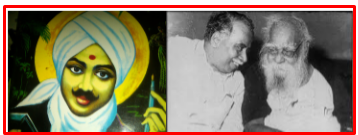
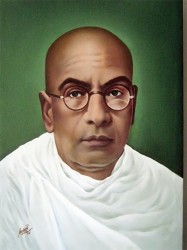


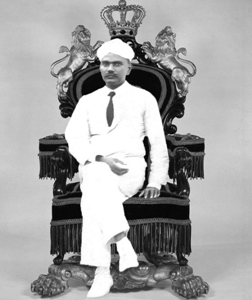





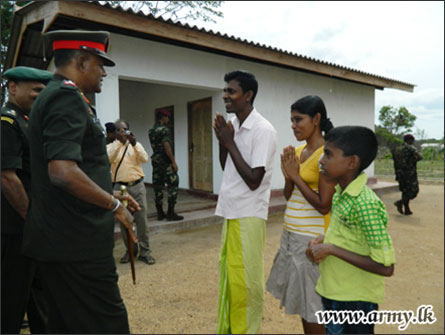


.jpg)
.jpg)



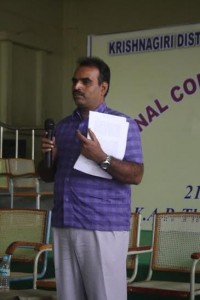 கொடுக்கப்பட்டுள்ளது:
கொடுக்கப்பட்டுள்ளது: